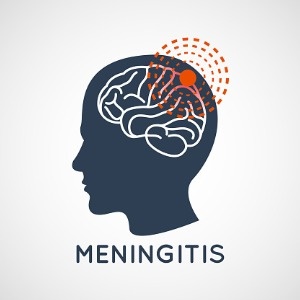
Spotting meningitis isn’t easy because the early signs are the same as the flu. So, it’s easy for your little one to develop it without you knowing.
By getting to know the signs, you can ensure they get treatment before it becomes serious. Meningitis is the inflammation of the meninges, the membranes that cover the brain and spinal cord.
Meningitis is usually caused by bacteria or viruses and sometimes by illness and certain medication. It spreads like colds and flu, when someone who’s infected touches, kisses, sneezes or coughs on you.
Common signs:
- Nausea and vomitting
- Drowsiness
- A small appetite
- Confusion and disorientation
- Sensitivity to bright light
- Fever
- Headache
- Neck stiffness
More severe symptoms include coma and seizure.Watch out for these signs in toddlers:
A refusal to be fed, irritable when picked up, a fever, and a bulging soft spot on their head, moaning and crying. Preventing meningitis is the best way to work against it.
Remember that not every child gets the same symptoms and they can appear in any order. Check your child often to make sure he doesn’t have it.
Make sure your little ones wash their hands often with soap and warm water. Encourage this, particularly after using the bathroom, when they’ve been around other kids and when they’ve been in contact with a sick person. Teach them not to share food, utensils and drinks with sick people.
If you suspect your child or anyone else has meningitis, you should:
- Take them to your doctor immediately.
- If you can’t get there right away, call and describe the symptoms.
- Go to the nearest emergency room if your doctor isn’t available.
Treatment
If a doctor suspects your child has meningitis, he will do tests. A sample from the spinal cord is usually taken. This can show signs of inflammation and infection due to a virus or bacteria. Blood samples may also be taken to check for bacterial infections in the blood. Sometimes, imaging of the head is done to check for swelling and inflammation.
There are two kinds of meningitis, viral and bacterial. Depending on which kind your child has, he’ll be treated a certain way.
Bacterial
Severe bacterial meningitis is very serious and must be treated immediately with antibiotics. It helps reduce the risk of complications like brain swelling and seizures. The antibiotic depends on the type of bacteria that caused the infection. The sinus may be drained if there’s a build-up of mucus and infection.In some cases, doctors may give an antibiotic to someone who’s been around an ill person with bacterial meningitis.
Viral meningitis
Unfortunately, antibiotics can’t be used for viral meningitis, but mild cases usually clear up on their own. It can be treated with bed rest, plenty of fluids and over-the-counter pain medication.





 Publications
Publications
 Partners
Partners










